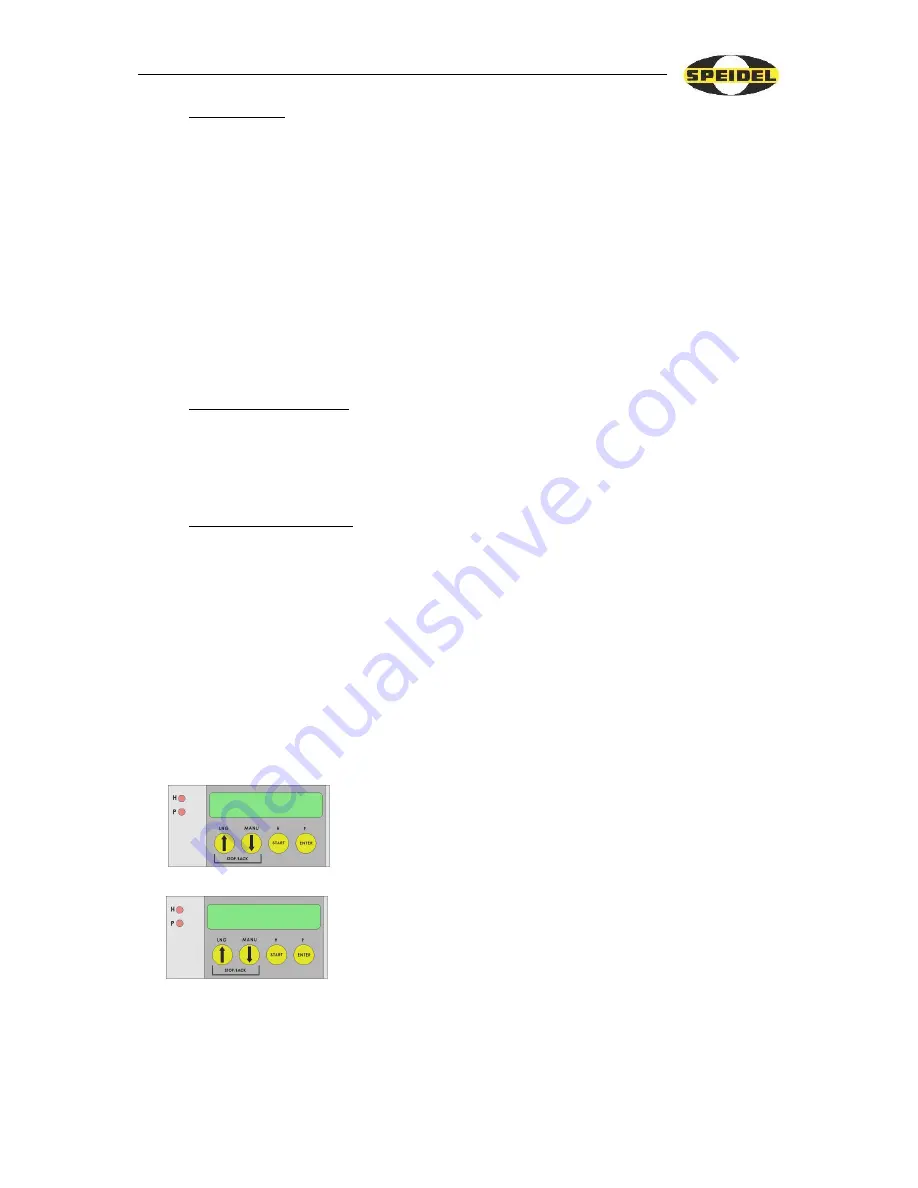
Speidel’s Master Brewer
Page 9 of 26
End of phase
quit
Remove malt pipe
quit
Maltose mode
During the maltose mode, which is the second phase, the molecules of starch are
converted into fermentable sugar with the aid of other enzymes that are present in the
malt. This phase is an important stage of the brewing process for forming alcohol
because the greatest amounts of sugar are formed during it. Extending the mode means
gaining more sugar in the wort, which lead to a stronger beer. Shortening the time
means that the beer will be more full-bodied on account of more dextrines. The
temperature is approximately 63°C and it will be maintained for a duration of
approximately 35 minutes. As in Phase 1, the controls show the relevant data in the
display. The complete further process (Phase 2 to Phase 5) is handled completely
automatically by the controls. In this phase and also in the following phase, the pump
is switched off briefly twice (PUMP PAUSE), in order to move the malt into a new
position and thereby achieve a better yield. The Master Brewer’s lid is on in order to
save energy.
Saccharifaction mode 1
Other starchy constituents are split up with the aid of active molecules in this
temperature level during the third mashing phase and they are liquefied in the wort.
The temperature level is approximately 73°C and will also be maintained for 35
minutes.
Saccharification mode 2
Residual starches are saccharified in the final phase and they thus form even more
unfermentable extracts, which allow the beer to become somewhat more full-bodied.
The wort is heated up to 78°C while doing so and with continuously pumped
recirculation: it has to be held there for between 10 and 20 minutes. An iodine test can
be used to establish whether any residual starch is still present in the wort. Put some
drops of wort on a white plate and add some salt for this purpose. The saccharification
will be sufficient if the sample turns brownish red or yellow. If that is not the case,
then the last temperature level must be held longer. In the last phase, no more pump
pauses will take place because of clarification of the wort.
4.5
Running off
On completion of the programme brewing phases, a signal
tone again sounds. This must also be acknowledged by
pressing ENTER. The pump switches off, and the so-called
‘running-off’ process is requested (“Remove malt pipe”). One
describes the separation of crushed malt from the beer wort as
‘running off’. Running off with the Master Brewer is a
relatively easy, quick and clean matter compared with many
other methods of domestic brewing and it represents one of the
Master Brewer’s main concepts. Remove the wing nut together
with the holding-down stirrup. The draining stirrup is laid on
the brewing boiler’s rim: the malt pipe is then pulled carefully
and slowly out of the boiler with the lifting stirrup. One hangs
the malt pipe in the holding stirrup on the lower supporting bolts, so that the beer wort
drains out of the malt into the boiler. One can still leach the last residues of extracts by
washing out the malt husks subsequently with an aftermash. One describes the process
as ‘sparging’ (the process is not absolutely necessary). The so-called ‘sparging’ takes
place by pouring in hot water at 78 °C (no boiling water) into the malt pipe from












































